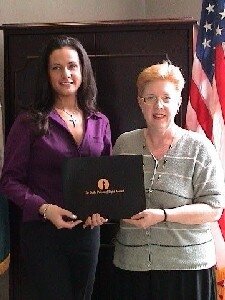 Volunteer work has become increasingly responsible, sophisticated, and complex. There are many excellent reasons to write policies around voluntary action in nonprofit organizations. Such policies can be used to establish continuity, to ensure fairness and equity, to clarify values and beliefs, to communicate expectations, to specify standards, and to state rules. Read on as we share six important principles of writing volunteer policies.
Volunteer work has become increasingly responsible, sophisticated, and complex. There are many excellent reasons to write policies around voluntary action in nonprofit organizations. Such policies can be used to establish continuity, to ensure fairness and equity, to clarify values and beliefs, to communicate expectations, to specify standards, and to state rules. Read on as we share six important principles of writing volunteer policies.
Be Concise
Write as much as is required to be clear and comprehensive. Remember, however, that the longer the policies and the thicker the policy manual, the more intimidating it will be and the less likely that it will be read and used regularly.
Be Clear
Take great care to ensure that the policies developed convey precisely and completely what is intended. Do no assume that people reading and applying policies will understand them to mean what was intended. Avoid technical terminology and jargon.
Be Directive
Policies should very clearly tell people what is expected. Although one would hope for complete compliance with all policies, it is obvious that compliance with some policies is much more important than with others. Therefore, some policies may be more strongly worded and authoritative than others.
Be careful not to lose sight of the fact that the subject of policy development being discussed here is the work of volunteers. For this reason, the tone of many policies in the volunteer department should very consciously be softened to be as palatable and inoffensive as possible. Be sure to convey a deep respect for the rights and dignity of volunteers, which still getting your message across.
Emphasize the Positives
Whenever possible, policies should motivate, enable, and inspire. They should articulate outside limits, leaving as much room as possible for flexibility and creativity. The presence of supportive and enabling policies can provide the encouragement and recognition that volunteers require to maximize their potential. Policies can demonstrate just how important the work is and the very real consequences of error when standards are not attained.
Illustrate
Do not hesitate to draw pictures, illustrate steps and sequences, or sketch methods or techniques. Diagrams and other graphic additions make the manual more pleasing to read, but more to the point, convey specific details that words sometimes cannot.
Does your volunteer program utilize policies? Let us know how in the comments below.


 A company that volunteers is a happier and better company, but that is only a small part of the picture. The support and encouragement that an employer gives to its employee’s volunteer activity can make a world of difference to their outcome! From something as simple as a kind word to an elaborate partnership with a local nonprofit organization, there are many ways employers can encourage volunteering among their staff. A variety of approaches can be utilized to reinforce or complement one another and suit the needs of the company. Read on to find an approach that is right for your organization.
A company that volunteers is a happier and better company, but that is only a small part of the picture. The support and encouragement that an employer gives to its employee’s volunteer activity can make a world of difference to their outcome! From something as simple as a kind word to an elaborate partnership with a local nonprofit organization, there are many ways employers can encourage volunteering among their staff. A variety of approaches can be utilized to reinforce or complement one another and suit the needs of the company. Read on to find an approach that is right for your organization. Endorsement
Endorsement![06.22.10.Group shot[small]](/wp-content/uploads/2010/06/06.22.10.Group-shotsmall-300x190.jpg) The idea of planning a volunteer project can be daunting! With all of the step involved, be sure to take time to visit the potential project site to determine the greatest needs. Whether you are working at a shelter, a park or a community service organization, a site visit will help you identify potential projects and ensure your project runs smoothly.
The idea of planning a volunteer project can be daunting! With all of the step involved, be sure to take time to visit the potential project site to determine the greatest needs. Whether you are working at a shelter, a park or a community service organization, a site visit will help you identify potential projects and ensure your project runs smoothly. Chances are, if you’re spending time volunteering and reaping the benefits, you’ll want to tell everyone! Why not get those closest to you in on the action with family volunteering? Proponents of family volunteering have stated that the benefits to families from family volunteering include sharing quality time together, transmission of values, modeling of compassion and civic engagement by parents, and improved communication between family members.
Chances are, if you’re spending time volunteering and reaping the benefits, you’ll want to tell everyone! Why not get those closest to you in on the action with family volunteering? Proponents of family volunteering have stated that the benefits to families from family volunteering include sharing quality time together, transmission of values, modeling of compassion and civic engagement by parents, and improved communication between family members.
 An important part of volunteer engagement is equipping volunteers for their tasks. You want to ensure they have the knowledge, skills, and attitudes to serve successfully. Additionally, many volunteers view service as a way to develop or improve skills, so training is a way to further their personal and professional development.
An important part of volunteer engagement is equipping volunteers for their tasks. You want to ensure they have the knowledge, skills, and attitudes to serve successfully. Additionally, many volunteers view service as a way to develop or improve skills, so training is a way to further their personal and professional development. Today’s guest post is written by Joshua Pedersen, CEO of
Today’s guest post is written by Joshua Pedersen, CEO of  An effective recognition program with the right mix of formal and informal recognition systems and that truly functions as an integral component of a volunteer program can honor and motivate volunteers for their contributions. (Formal volunteer recognition includes certificates, plaques, pins, or dinners to honor volunteer achievement. Informal recognition occurs in the daily interchange between volunteers and the organization when its staff conveys appreciation for the volunteers’ work.)
An effective recognition program with the right mix of formal and informal recognition systems and that truly functions as an integral component of a volunteer program can honor and motivate volunteers for their contributions. (Formal volunteer recognition includes certificates, plaques, pins, or dinners to honor volunteer achievement. Informal recognition occurs in the daily interchange between volunteers and the organization when its staff conveys appreciation for the volunteers’ work.)
 Did you volunteer during
Did you volunteer during 



